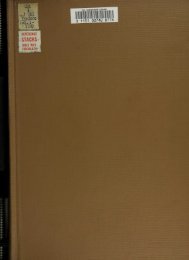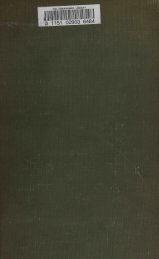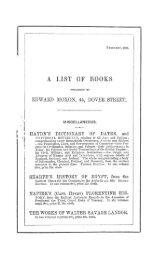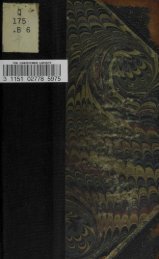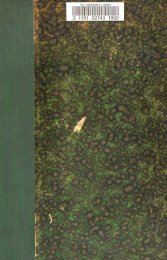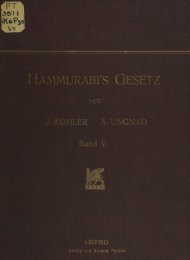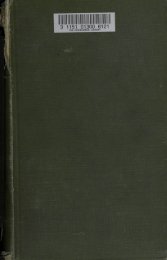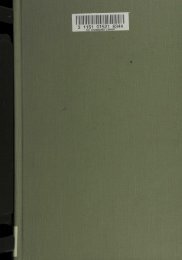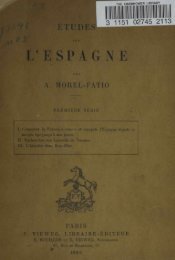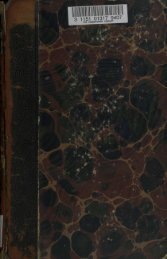•-***!:* :li2H jIEÜ~ 1 1 1 - JScholarship
•-***!:* :li2H jIEÜ~ 1 1 1 - JScholarship
•-***!:* :li2H jIEÜ~ 1 1 1 - JScholarship
Sie wollen auch ein ePaper? Erhöhen Sie die Reichweite Ihrer Titel.
YUMPU macht aus Druck-PDFs automatisch weboptimierte ePaper, die Google liebt.
II. Kosmology. 247<br />
our understanding. So the Samsära is just so far|from the truth, as the<br />
sagunä vidyä is from the nirgunä vidyä; it is the eternal truth itself,<br />
but (since we cannot conceive it otherwise) the truth in allegorical<br />
form, adapted to our human understanding. And this is the character<br />
of the whole exoteric Vedänta, whilst the esoteric doctrine tries to find<br />
out the philosophical, the absolute truth.<br />
And so we come to the esoteric Kosmology, whose simple doctrine<br />
is this, that in reality there is no manifold world, but only Brahman, and<br />
that what we consider as the world, is a mere illusion (mäyä) similar to<br />
a mrigatrishnikä, which disappears when we approach it, and not more<br />
to be feared than the rope, which we took in the darkness for a serpent.<br />
There are, as you see, many similes in the Vedänta, to illustrate the<br />
illusive character of this world, but the best of them is perhaps, when<br />
Qahkara compares our life with a long dream;—a man whilst dreaming<br />
does not doubt of the reality of the dream, but this reality disappears<br />
in the moment of awakening, to give place to a truer reality which we<br />
were not aware of whilst dreaming. The life a dream! this has been the<br />
thought of many wise men from Pindar and Sophocles to Shakspere and<br />
Calderon de la Barca, but nobody has better explained this idea, than<br />
Cankarä. And indeed, the moment when we die may be to nothing so<br />
similar as to the awakening from a long and heavy dream; it may be,<br />
that then heaven and earth are blown away like the nightly phantoms<br />
of the dream, and what then may stand before us ? or rather in us ?<br />
Brahman, the eternal reality, which was hidden to us tili then by this<br />
dream of life!—This world is mäyä, is illusion, is not the very reality,<br />
that is the deepest thought of the esoteric Vedänta, attained not by calculating<br />
tarka but by anubhava, by returning from this variegated world<br />
to the deep recess of our own Seif (Ätman). Do so, if you can, and you<br />
will get aware of a reality very different from empirical reality, a timeless,<br />
spaceless, changeless reality, and you will feel and experience that whatever<br />
is outside of this only true reality is mere appearance, is mäyä,<br />
is a dream!—This was the way the Indian thinkers went, and by a similar<br />
way, shown by Parmenides, Plato came to the same truth, when knowing<br />
and teaching that this world is a world of shadows, and that the reality<br />
is not in these shadows, but behind them. The accord here of Platonism<br />
and Vedäntism is wonderful, but both have grasped this great metaphysical<br />
truth by intuition; their tenet is true, but they are not able to<br />
prove it, and in so far they are defective. And here a great light and<br />
assistance to the Indian and the Greek thinker comes from the philosophy<br />
of Kant, who went quite another way, not the Vedäntic and Piatonic<br />
way of intuition, but the way of abstract reasoning and scientific<br />
proof. The great work of Kant is an analysis öf human mind, not in the<br />
superficial way of Locke, but getting to the very bottom of it. And in



